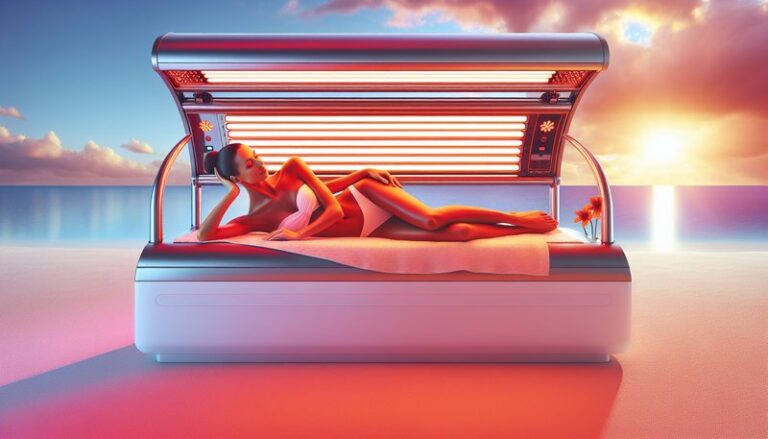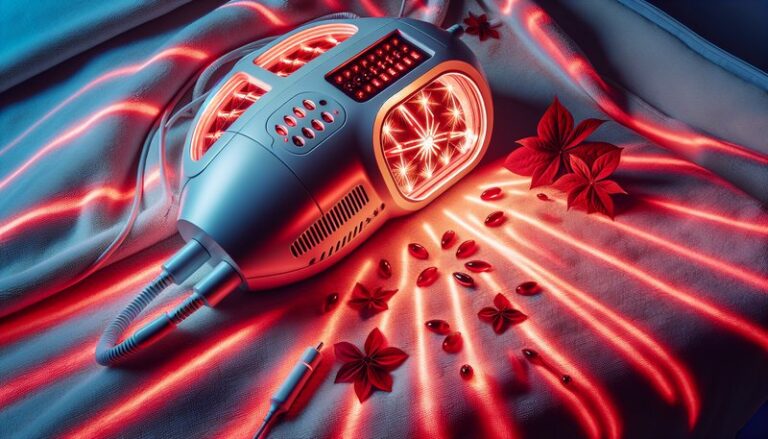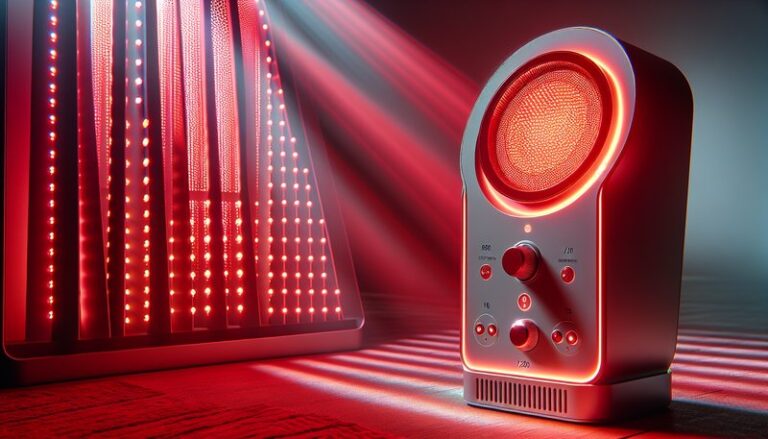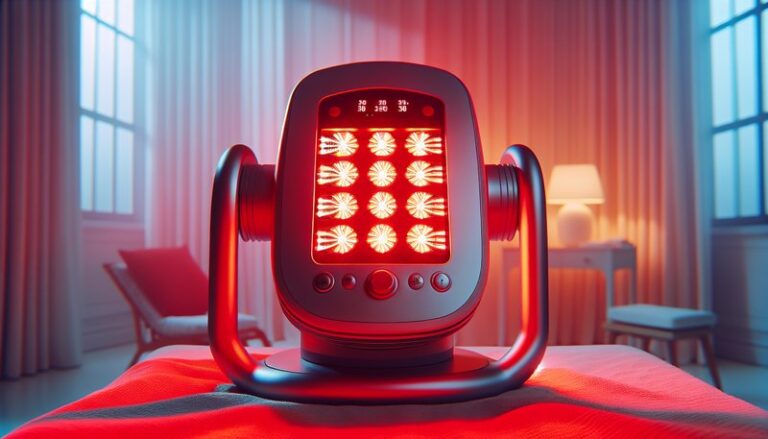Does Red Light Therapy Help With Seasonal Depression?
Does Red Light Therapy Help With Seasonal Depression?
Can light be the key to fighting seasonal depression?
With the onset of shorter days and colder weather, many individuals experience a dip in mood, often referred to as Seasonal Affective Disorder (SAD). This article explores the potential role of red light therapy as a treatment modality for seasonal depression, examining its benefits, alternatives, and considerations.
Key Takeaways
- Red light therapy may help increase energy levels and improve mood during the winter months.
- The therapy works by stimulating cellular functions and has been linked to improvements in mental wellness.
- Alternative treatments and lifestyle changes can complement the use of red light therapy for managing symptoms of SAD.
What is Red Light Therapy?
Red light therapy (RLT) is a non-invasive treatment that uses low-wavelength red light to promote healing and wellness at a cellular level. It is believed to enhance mitochondrial function, which can lead to increased energy production and cellular repair. It has gained popularity over recent years for a variety of uses, including skin rejuvenation, pain relief, and mood enhancement.
RLT typically involves exposure to specific wavelengths of light (usually between 600 to 650 nanometers) via LED devices or lamps. This light penetrates the skin and interacts with cells, potentially leading to a range of therapeutic effects.
What are the Benefits of Red Light Therapy?
The following points outline the potential advantages of using red light therapy to alleviate symptoms of seasonal depression.
Boosts Mood and Energy Levels
Research suggests that red light therapy can positively affect mood by influencing neurotransmitters in the brain. For those suffering from SAD, using RLT may provide a natural energy boost, counteracting the fatigue often observed in winter months.
Enhances Sleep Quality
Proper sleep is essential for mental health. Red light therapy has been linked to improved sleep patterns by regulating circadian rhythms, ultimately leading to better mood and reduced signs of depression.
Supports Overall Mental Wellbeing
By reducing inflammation and promoting cell regeneration, red light therapy can enhance overall wellbeing. This holistic approach may help individuals manage their emotional health more effectively during challenging seasonal transitions.
Improves Skin Health
While primarily related to mood, healthier skin resulting from RLT can boost self-esteem and confidence, contributing to an overall positive outlook, which is crucial for combating symptoms of seasonal depression.
Is it Possible to Use Red Light Therapy for SAD?
Yes, using red light therapy as an adjunct treatment for Seasonal Affective Disorder is feasible. Many individuals incorporate RLT into their routines during fall and winter months, utilizing at-home devices or visiting specialized clinics.
What are the Advantages of Using RLT?
Engaging in RLT provides several benefits:
Convenience and Accessibility
At-home red light therapy devices make it easy for individuals to access treatment whenever necessary, fitting into diverse lifestyles and schedules.
Non-Invasive Treatment
RLT is a safe, non-invasive method of potentially alleviating symptoms. Unlike pharmaceutical options, it generally has few side effects.
Holistic Approach
Utilizing red light therapy aligns with a holistic approach to health, including physical, mental, and emotional improvements, appealing to those seeking non-traditional forms of treatment.
Cost-Effective Option
With various at-home devices available, RLT may prove more cost-effective in the long run compared to ongoing therapy or medication costs.
What are the Disadvantages of Using RLT?
While RLT offers potential benefits, it is essential to consider possible drawbacks:
Limited Scientific Evidence
Although initial studies suggest positive effects, more extensive and definitive research is needed to solidify RLT’s efficacy for treating SAD specifically.
Initial Investment Costs
Purchasing a red light therapy device can be costly upfront, which may deter some individuals from trying it out.
Time Commitment
Consistency is crucial for RLT to be effective, requiring regular sessions that may demand additional time in a busy schedule.
What are the Things to Consider Before Using RLT?
Prior to starting red light therapy, individuals should take the following factors into account:
Assessing Personal Health Status
Individuals with specific medical conditions or skin sensitivities should consult with a healthcare provider before beginning RLT to ensure it’s suitable for them.
Determining Device Quality
Not all RLT devices are created equal. It’s essential to choose high-quality products from reputable manufacturers to ensure efficacy and safety.
Setting a Routine
For RLT to be effective, establishing a regular routine is crucial. Consider carving out specific times for sessions and combining them with other healthy habits for maximum benefit.
Find out in Can Red Light Therapy Burn Fat?
What are the Alternatives to Red Light Therapy?
In addition to RLT, several alternative treatment modalities exist for managing seasonal depression:
Light Therapy Boxes
Bright light therapy using specialized light boxes is a well-researched alternative. It mimics natural sunlight to help regulate mood and melatonin levels.
Exercise and Physical Activity
Regular physical activity is known to promote endorphin release, which helps improve mood and reduce symptoms of depression.
Cognitive Behavioral Therapy (CBT)
CBT has been found to be effective for individuals struggling with SAD. It equips individuals with tools to manage their negative thoughts and enhances coping mechanisms.
Discover our review on Is Red Light Therapy Effective for Spider Veins?
Conclusion: Is it Recommended to Use Red Light Therapy for SAD?
In summary, red light therapy shows promise as a potential aid in managing seasonal depression due to its mood-boosting properties and additional health benefits. However, it should not be seen as a standalone solution but rather part of a comprehensive approach that may include traditional light therapy, lifestyle changes, and professional support. Before starting red light therapy, consider consulting with a healthcare provider to tailor a treatment plan that best suits individual needs.
Frequently Asked Questions
Can red light therapy replace medication for SAD?
While RLT may provide supportive benefits, it should not replace prescribed medication without consulting a healthcare professional.
How often should I use red light therapy for the best results?
Recommendations typically suggest using RLT for 10-20 minutes, several times a week, but individual needs may vary. Consistency is key for maximum benefit.
Are there any side effects associated with red light therapy?
Generally, RLT is considered safe with few side effects, though some may experience mild skin irritation in rare cases. Always schedule a consultation for personalized advice.
Can red light therapy be used alongside other treatments?
Yes, RLT can be effectively integrated with other therapeutic interventions such as light therapy boxes, cognitive behavioral therapy, and exercise for a combined approach.
How do I choose the right red light therapy device?
Look for devices that list the wavelength, power output, and safety certifications. User reviews and overall reputation of the brand can also be helpful in informing your decision.




